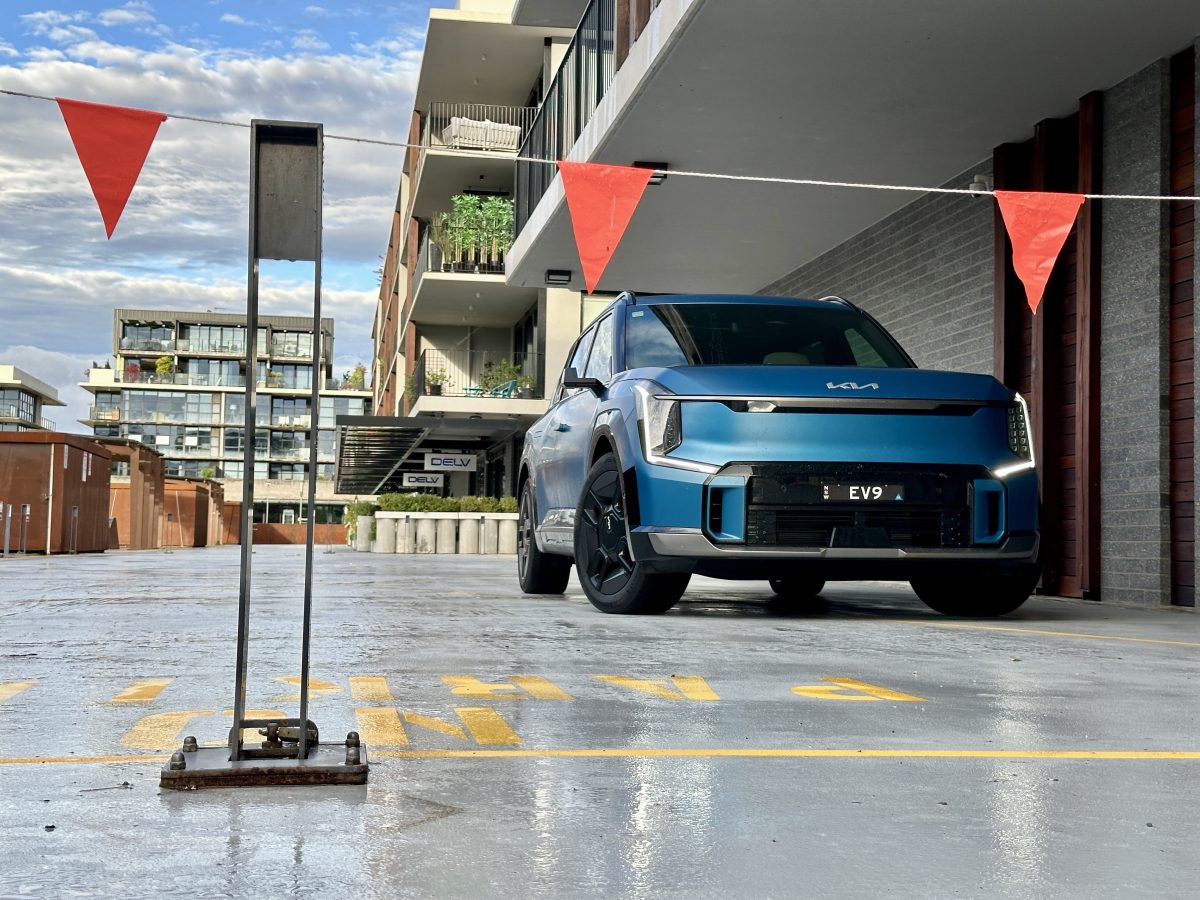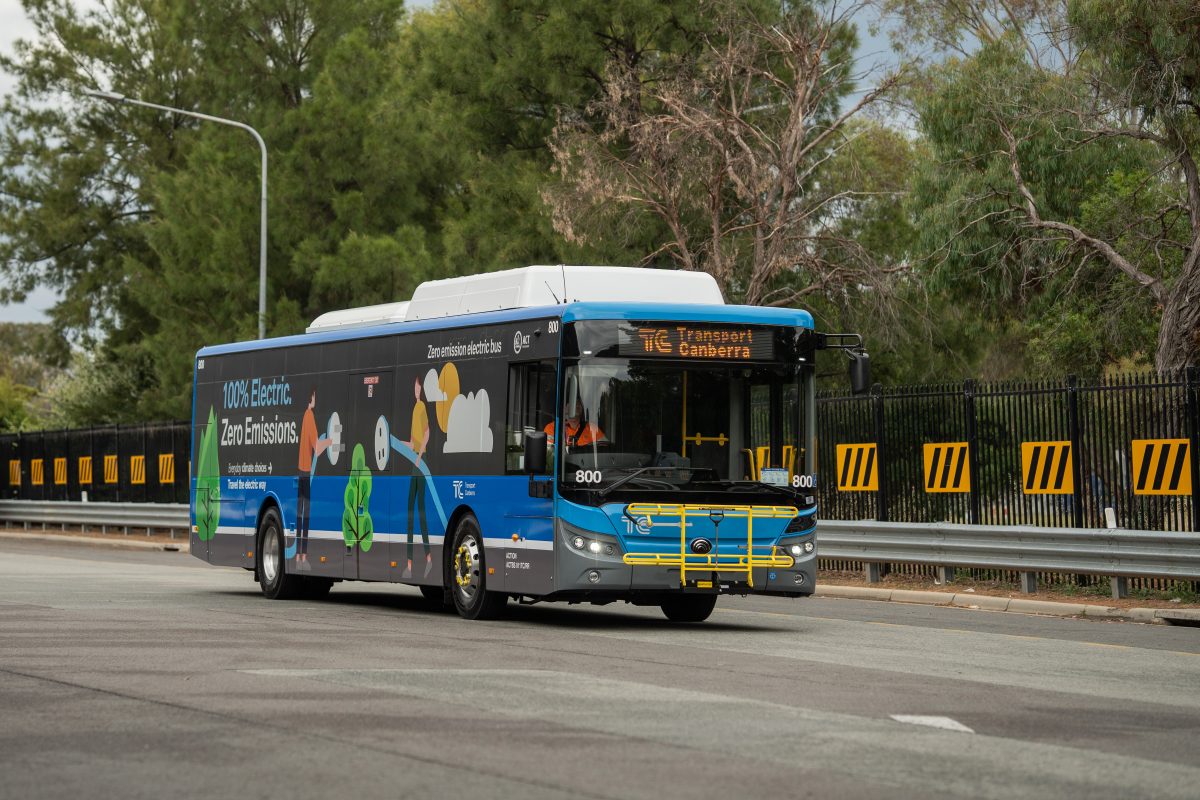
An electric Kia EV9 parked alongside apartments on the Kingston Foreshore, but who heard it coming? Photo: James Coleman.
From November next year, all new electric vehicles in Australia will be required to make some sort of noise when moving at low speed, according to a new law that blind and low-vision advocates say is about eight years late.
There have been limits on the decibels emitted by petrol and diesel-powered vehicles for decades, but the largely silent electric and hydrogen fuel-cell fleet doesn’t have this problem.
This has increased the risk of collisions with pedestrians, especially for those who rely on sound to negotiate the roads safely.
An ‘Acoustic Vehicle Alerting System’ (AVAS) brings the noise back as a “safety alert or sound, emitted when an electric vehicle is travelling at low speeds in car parks, intersections and driveways”, according to Infrastructure, Transport, Regional Development and Local Government Minister Catherine King.
The vehicle must make a continuous sound at speeds up to 20 km/h, varying in volume and pitch by at least 0.8 per cent every 1 km/h so pedestrians not only know the vehicle is moving but can gauge how fast it’s moving as well.
The tech is already mandated across the UK, US, Japan and Korea, in line with United Nations Regulation 138/01 (UN R138/01).
Last year, in response to a petition from Vision Australia, the Federal Government agreed to consult the public on an AVAS mandate for Australia, and the response came back loud and clear.
It says it was “strongly supported” by state and territory governments, the blind and low-vision community, and vehicle manufacturers.

The new Australian Design Rule will apply to all new electric cars, trucks and buses from November 2025. Photo: Tesla.
The new Australian Design Rule (ADR) will come into effect in November 2025 and require all new electric, hybrid and hydrogen fuel cell cars, trucks and buses to be fitted with an AVAS.
This is expected to avoid around 68 fatalities, 2675 serious injuries and 2962 minor injuries by 2060 and is estimated to save Australian taxpayers $208 million.
“As more and more Australians choose to drive EVs, we are committed to ensuring that they are safe for both drivers and others using the road,” Transport Minister Ms King said.
“This is a significant win for the blind and low-vision community, which has long advocated for alert systems like this to be introduced in Australia.”
The question from the Canberra Blind Society is why it’s taken so long.
Secretary Graham Downie first raised the issue with the Australian and ACT governments in 2016 when EVs represented a meagre 0.12 per cent of all new car sales in Australia.
“At higher speed, it’s not really significant – the tyre noise is quite sufficient – but at low speeds, it’s masked by other sounds,” he says.
“We have to be very careful crossing roads and walking along footpaths because we rely on clues. For example, when you hear a vehicle start-up in a driveway, you’re alert to the fact that this person’s about to back out, and we must either wait or hurry.”
He doesn’t know of any collisions between members of the society and Canberra’s EV drivers but says it’s only a matter of time.
“We’ve still got to wait until November next year – that seems very strange.”

Transport Canberra updated the warning sound emitted by their electric buses in December last year. Photo: ACT Government.
Late last year, Transport Canberra altered the AVAS emitted by their electric buses from a ‘bong, bong’ noise to a more subtle one that “simulates the sound of an engine”.
This was said to “comply with incoming … regulations” and was partly quickened by complaints from drivers and users, who found the original noise annoying. Graham agrees.
“You don’t want a noise that annoys people. You want it to fit in with the rest of the traffic ambience. I’ve only ridden on the bus since that change, and I signalled it, and it wasn’t a problem.”
What it will also help fix, he says, are pedestrians giving more attention to their smartphones than their surroundings.
“It’s not only for people who have a disability – the potential victims of these things are more the people with their faces in their phones.”













